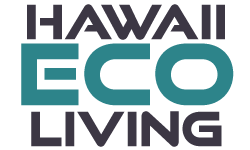 Peacefully isolated 2,350 miles from the busy streets of San Francisco and resting on the edge of the Intertropic Convergance Zone, the Big Island of Hawai'i's location and breathtaking topography foster the perfect conditions to facilitate high agricultural yields and daily rainbows. According to Margaret Hopkins from the Department of Research and Development for the county of Hawaii, “The presence of 11 of the world's 12 micro-climates on the Big Island provides a great opportunity to make our island the center of ‘customized' farming technology development in the world.” From the black, yellow, and green sand beaches sea to the scarred summit of Mauna Kea (13,796), also known as Pu'u Wekiu, the diversity of climate zones on the Big Island accommodates the possibility of growing nearly every plant species that exists on Earth.
Peacefully isolated 2,350 miles from the busy streets of San Francisco and resting on the edge of the Intertropic Convergance Zone, the Big Island of Hawai'i's location and breathtaking topography foster the perfect conditions to facilitate high agricultural yields and daily rainbows. According to Margaret Hopkins from the Department of Research and Development for the county of Hawaii, “The presence of 11 of the world's 12 micro-climates on the Big Island provides a great opportunity to make our island the center of ‘customized' farming technology development in the world.” From the black, yellow, and green sand beaches sea to the scarred summit of Mauna Kea (13,796), also known as Pu'u Wekiu, the diversity of climate zones on the Big Island accommodates the possibility of growing nearly every plant species that exists on Earth.
Historically, between the years 500 and 700 C.E., Polynesians from the islands of Marques brought various plant species to Hawai'i with outrigger canoes. Their selection of plants included ‘Ape, ‘Awa, ‘Awapuhi Kuahiwi (shampoo ginger), Hau Ipu, Kalo (taro), Kamani, Ki, Ko (sugar cane), Kou, Kukui, Mai'a (banana), Niu (coconut), Noni, ‘Ohe (bamboo), ‘ohi'a ‘Ai (mountain apple), ‘Olena (turmeric), Olana, Pia, Uala (sweet potato), Uhi (yam), ‘Ulu and Wauke. Centuries later, an economic expansion created by the California gold rush in 1849 led to an agricultural boom in Hawai'i when off-island investors introduced crops such as Irish potatoes, onions, oranges, coffee, rice, Macadamia nut, solo papaya, and sugar cane.
In a short period of time, large-scale production of commercial crops displaced traditional crop production, but by 1907, rice production peaked at approximately 42 million pounds per annum, whereas sugarcane peaked around 1933 with 254,563 acres under production. In the last century, large-scale agricultural production in Hawai'i has significantly diminished as rice, sugarcane, and pineapple production moved off-island because of rising labor and land costs. As a result, the Big Island of Hawai'i currently imports 85% of its food and its residents spend 22% of their income on imported food. In 2008, the local market share of production for food staples such as meat, eggs, and milk was only 11%. Similarly, locally grown vegetables constituted only 36% of the market share. Compounding the problem, the intensive use of toxic chemical pesticides and fossil fuel fertilizers by large-scale industrial farms for decades has degraded the most fertile areas of Hawai'i.
via Moving Past Plantations towards Sustainable Local Farms | Billy Mason.

